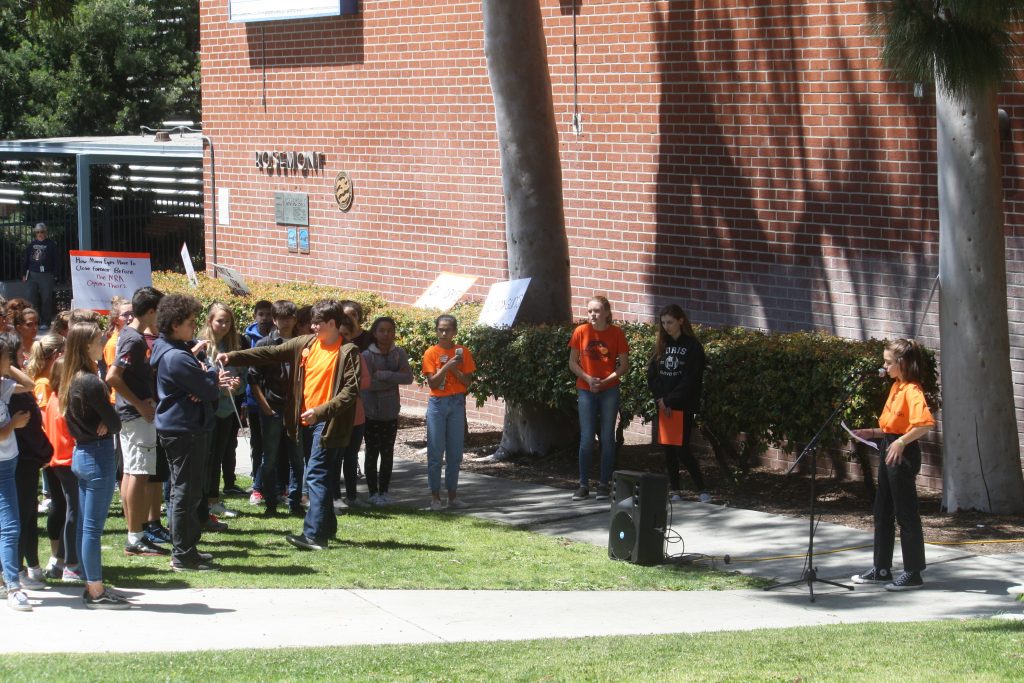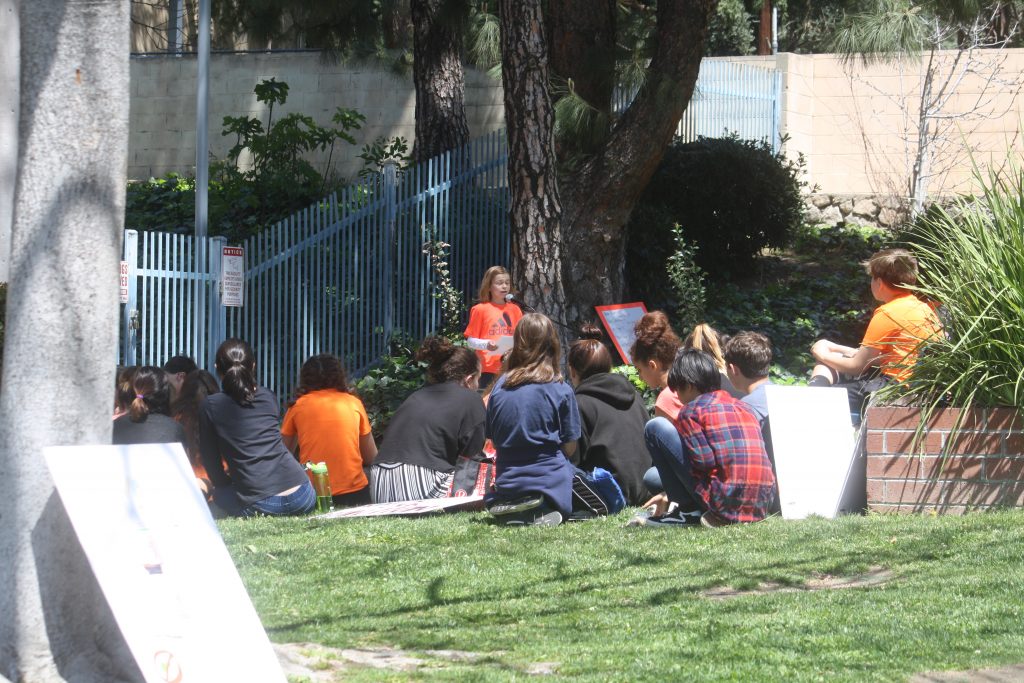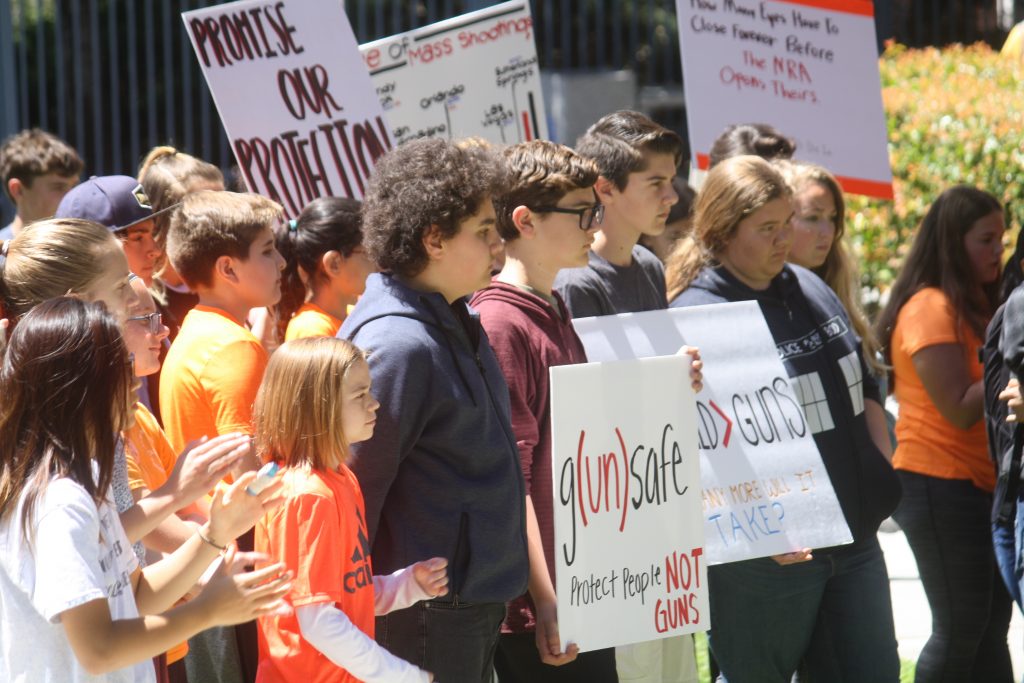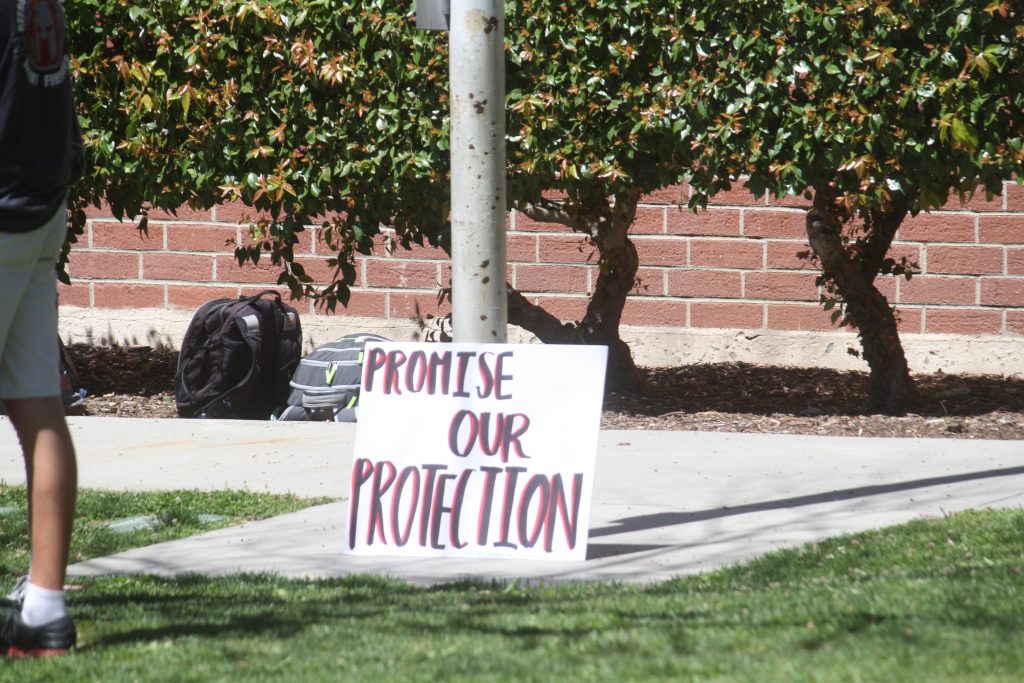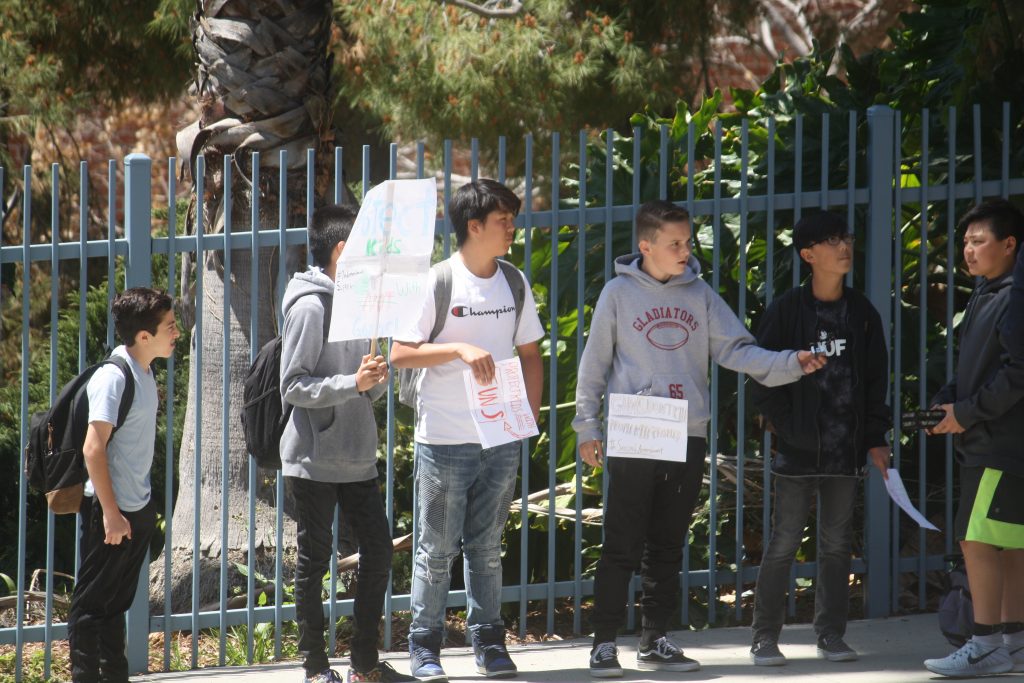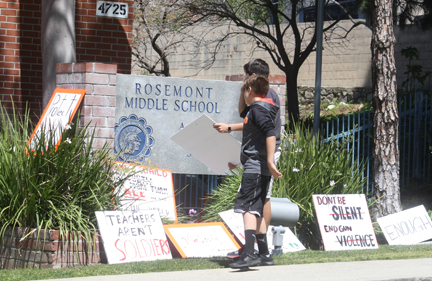
Rosemont students look over the signs that were carried during Friday’s walk-out.
By Mary O’KEEFE
Despite facing penalties from their school, including truancy, about 45 students from Rosemont Middle School walked out of class just before lunch on Friday, missing their fifth period classes.
“We feel this is so much bigger … and if we could make a difference it will be worth it,” said Roan Thibault, eighth grader and one of the walk-out organizers.
The Rosemont students joined thousands of students across the U.S. in the National School Walk-Out to commemorate the 19th anniversary of the shootings at Columbine and to ask for gun reform legislation.
“I would rather show I care and stand my ground. I would rather be true to what I care about and take the penalty,” said Lucy Rickey, an eighth grader and another of the organizers of the walk-out.
It was April 20, 1999 when two armed teens entered Columbine High School in Littleton, Colorado and killed 13 people and wounded more than 20 others. Students at Rosemont Middle and Crescenta Valley High schools have been aware of the Columbine shootings. Both schools have held Rachel’s Challenge assemblies at their schools. Rachel Joy Scott was the first person killed during the Columbine shooting.
Both Rosemont students said they are aware of what is happening around the country in schools and had not been shielded from the gun reform debate.
“When I heard about the Parkland shooting, I was upset and angry. Then, when [we] heard about the National Walk-Out, we wanted to join the walk-out too, especially since Roan and I had already organized the ‘die-in,’” said Rickey.
In February at Marjory Stoneman Douglas High School in Parkland, Florida, a 19-year-old man entered the school with an AR-15-style semi-automatic rifle and killed 17 people – 14 students and three adults – and wounded another 14. The “die-in” was held last month at Rosemont to again join protests across the country to bring awareness of gun violence in schools.
At Rosemont on Friday, both sides of the gun reform issue were represented and students were respectful to each other as they held up signs at the rally. Although both sides spoke of concerns of safety at their schools and of “reasonable gun reform,” it was the definition of “reasonable” where they differed.
“A lot of people say we want to take away their guns, but that’s not what we want to do,” Thibault said. “We just don’t feel that someone should be able to enter our schools and mow down a classroom in seconds.”
Elliott Ko and Connor Ford, both seventh graders and organizers of the opposing views at the rally, also walked out of school along with about 10 of their supporters.
“We are here because we want people to know we believe there should be stricter gun laws [concerning] background checks and age [requirements], but what I don’t believe is we should take all guns away from people,” Ko said.
He added that he feels guns for personal protection and sports should be allowed.
“Some guns are used in sports and students can [receive] scholarships,” he said.
Ford pointed out that the 19-year-old shooter in Florida was not mentally stable. He thinks reform should include restricting guns from those who have mental illness.
Neither Ford nor Ko feel restricting the possession of AR-15s, the type of gun used in Florida, would solve anything.
This is a division in philosophy between the two sides. During the walk-out Thibault and Rickey announced student speakers who spoke about the students who have lost their lives to school gun violence, including those at Columbine. They shared stories of those who have written about their experience with an active shooter on campus. One student wondered how the parents of those students must have felt when hearing of the shooting.
The students then took to their phones and called senators and congressional representatives in a variety of states. They left messages of who they were, their age and what they thought of that representative’s gun reform position.
“School shouldn’t be a place to feel scared, it should be a place where we feel safe,” one student said.
No matter what side of the issue they were on, the students who walked out all spoke of not feeling safe while at school. In addition to fire and earthquake drills, schools have now included lockdown drills for their students.
Ford and Ko said they feel safe when the Student Resource Officer is on campus.
“I feel safe on Thursdays,” Ford said. That is the day that the SRO is on campus.
It was suggested that good safety solutions would include having on-campus armed teachers well-trained in firearms or, better yet, an armed retired officer.
For Thibault and Rickey, it is not about arming more people but reforming the firearm laws so there is less of a chance for an armed student, or adult, entering their school.
Their fears and concerns have made them change the way they look at their classroom.
“When I am [assigned a new seat], I look around to see who is near me, like [I did] before, but now I look at what I am close to. What can I do if [a gunman] comes into the classroom? Am I near a door or window? Is there a bookshelf or something I can hide behind? [Thinking like this] has become integrated into my school life now,” Rickey said.
On Friday at Forest High School in Florida, prior to the students joining the National Walk-Out, a 19-year-old man, who was not a student, shot a 17-year-old student on campus. The school went into lockdown. The student who was shot was treated at the hospital. The suspect was placed in custody.
According to news reports, the Forest High shooting marks the 20th shooting on a school campus in 2018.

